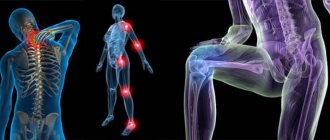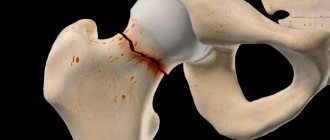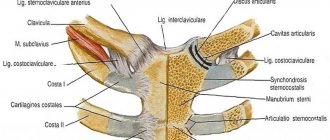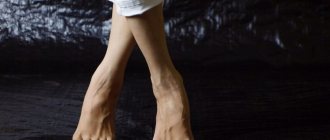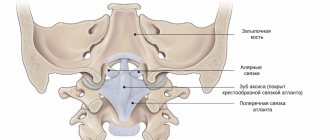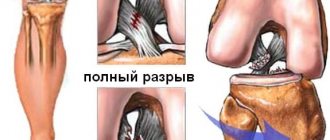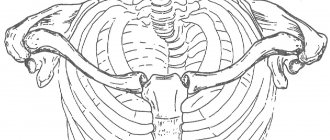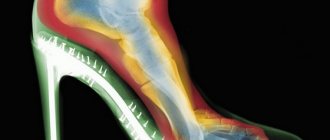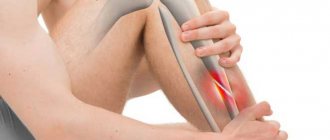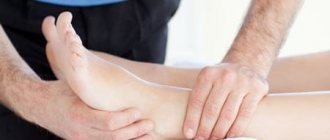The ankle joint is a hinge joint that can move through one plane of motion - the sagittal plane.
Within this movement there are two more movements: plantarflexion and dorsiflexion - the movement or direction of the toes down and in the opposite direction. Dorsiflexion, the upward bending of the foot, is considered the most important of the movements because it allows the lower leg to move forward relative to the position of the foot. This is important for the correct sensation of the body in space and effective movement.
What Causes Poor Dorsiflexion?
- Flexibility Issues
- Restricted joint mobility, such as due to scar tissue and adhesions in the joint from previous injuries or surgeries
- Other injuries in the lower body, for example if the athlete experiences pain in the knee, hips or back, or any other muscle soreness in the lower body. The person will instinctively limp or change their movement to avoid discomfort. This will gradually lead to ankle problems.
- High heels. Excessive wearing of heels can lead to poor joint flexibility, which can lead to problems.
Need for ankle strengthening
In the area of the ankle joint there are the articular surfaces of the fibula and tibia, and the trochlea of the talus. Thanks to articulation, ligaments and muscles, the lower leg is connected to the foot. The following types of damage are distinguished in this area:
- subluxation, dislocation, fracture, crack;
- sprain or rupture of ligaments and muscles.
Pathologies form even in the absence of excessive physical activity. For example, a person may trip and fall, causing a fracture in the head of the fibula. There are other causes of damage:
- hard physical work;
- use of high heels;
- incorrectly placed foot while walking;
- injuries during sports;
- direct blow, unsuccessful landing during a jump.
To eliminate the risk of permanent injuries and make muscles and ligaments stronger, it is recommended to use a set of measures aimed at strengthening the ankle joint. The tissues become more active and stronger. Orthopedists recommend using comprehensive techniques to restore the musculoskeletal system to enhance the strength of bone tissue.
Severe, sharp or dull, aching headaches are the leading clinical manifestation of cervical osteochondrosis. To eliminate them, it is not enough just to take analgesics, but it is necessary to use drugs to improve the functioning of the entire spinal column. Read more in the article: “how to treat osteochondrosis of the cervical vertebra.”
Proprioception - why is it needed?
Increasing proprioception can reduce the risk of injury. It can also improve productivity.
A person with excellent balance and sense of space will be able to control their body more effectively. This is especially true for sports such as basketball and football.
The easiest and most affordable way to strengthen your leg muscles and some of your ankle stabilizers is to run barefoot . Just about 20 minutes of running barefoot, in winter this can be done on a treadmill, will bring a tangible benefit.
One of the key factors to excellent physical fitness is consistent training. This means having a strong and trained body that can withstand a large amount of stress. Injury prevention efforts can include a variety of strategies, and one common method is balance training.
To improve balance and proprioception, you can use a balance platform. There are a lot of exercises on such a simulator and all of them are very beneficial, strengthening the ankle. To begin with, perform the exercise in several approaches for only 20-30 minutes, gradually increasing the load.
Exercises to strengthen the foot: set 2
A simple set of exercises from Vasily Parnyakov, a former professional runner and NTV-plus sports commentator. Exercises can be performed on grass, sand and a gymnastic mat.
In addition to dynamic exercises, pay attention to lifting an object. A simple and accessible exercise that is suitable even for children to prevent flat feet. It forces many muscles of the foot to work, which are not included in the work when walking or running. You can not only lift, but also shift any small objects that are convenient to hold with your toes: buttons, pencils, small stones.
Balance exercises
- Standing on one leg, maintain your balance for 30 seconds, then change legs.
- Use the ball. There are many variations of this exercise, for example, turns in different planes with a ball in your hands or, standing on one leg, throw and catch the ball. You will need a partner for this workout.
- Double-legged or single-legged squats, start with 10 reps.
Balance training can be viewed here - Working on balance
Strengthening the lower leg and foot at home and in the gym
At home
There are many ways, let's look at 6 main methods that will keep the joint and ligaments in good health:
- Jump rope. You need to jump low and try not to land on your heel. This exercise develops hand coordination and reaction. The ability to synchronously use many muscles of the body is enhanced. You need to jump on your toes, preferably on a soft surface and in shock-absorbing sneakers. If you have flat feet, jumping without shoes increases unwanted stress on the joint.
- Running on your toes. If you run, organize periods of running on your toes. For example, you run 5 km every other day. Run one kilometer only on your toes. You can break this kilometer into several sections throughout the route.
- Scatter the buttons on the floor. Arrange a competition with your other half to see who can collect the most buttons with their bare feet. Grab the buttons with your toes and transfer them to 2 jars. It's useful and interesting. Firstly, the motor skills of the toes develop, and secondly, certain areas of the brain also work.
- Elevated toe raises. You can use any threshold or put unnecessary books. Stand with your toes elevated so that your heels on the floor are lower than them. Now slowly rise to the maximum possible height on your toes and lower back down. Do this 30 times.
- For the next exercise you will need a bottle. She will need to be rolled on the floor with her foot. You can wear socks, or you can barefoot. This is a kind of rehearsal for foot massage.
- The most enjoyable activity is foot massage. We recommend using special massagers. As a last resort, you can do it yourself. Believe me, there is nothing more pleasant. Especially for girls.
In the gym
We strengthen the joint and ligaments by doing calf exercises.
In Smith
The good thing about the Smith machine is that it has a threshold that makes it convenient to train your calves. You can additionally put a footrest in the form of a small platform.
Stand on it with your toes (or on the threshold). The bar needs to be set at such a height that you can remove it from its locking position by slightly lifting it onto your toes.
In this machine you can fully lean on the barbell without fear of falling. Do 12-15 vertical oscillations with the maximum amplitude of contraction and stretching of the calves. Please note that the entire ankle is tense along with the calves.
Do the exercise in two approaches. If you're lifting your ankle, do the exercise with weights.
In the Gakk machine
Here you can swing your ankle both with your head up and down. Do what is most convenient for you. But remember that you cannot fully straighten your knees. Let's look at an example of getting into the starting position for a leg press:
- Hang the desired weight. Place your feet shoulder-width apart.
- Let your heels hang off the platform (that is, you place your feet on the bottom of it so that the support is on your toes).
- Squeeze the weight, but you don’t need to fully straighten your legs.
- This is the starting position. We begin to raise and lower the weight due to the movement of the ankle. Press as you exhale, lower as you inhale. We do it slowly.
- 2-3 sets of 15 times is quite enough.
Some people find it more convenient to do the same exercise while standing on their feet. Choose the option that is most convenient for you.
Degrees of ankle sprain
Sprains come in 3 degrees of severity, which differ in the severity of anatomical changes and characteristic symptoms.
1st degree sprain:
- microtears of individual ligament fibers occur, but the anatomical integrity of the structure is maintained;
- the pain syndrome is moderate, there is a slight limitation of movement, mild swelling.
2nd degree sprain:
- rupture of a large number of ligament fibers may be accompanied by partial damage to the ankle joint capsule;
- moderate swelling, possible bruising, severe pain, noticeable limitation of movement and difficulty supporting the affected limb.
3rd degree sprain:
- ligamentous fibers are completely torn;
- sharp intense pain, extensive swelling, hemorrhages and hematomas, movements are limited to the point of complete immobility, support on the leg is impossible.
Grade 1-2 sprains are usually successfully treated using conservative methods. A grade 3 sprain accompanied by ligament rupture may require a combination of conservative and surgical treatment. It is also worth considering that the speed and success of recovery is influenced by concomitant injuries, the presence of unfavorable factors, the timeliness and adequacy of treatment.
Why do my feet hurt?
There is a company in Switzerland that produces special shoes: they are designed to simulate walking on sand.
The company name, MBT, stands for Masai Barefoot Technologie. The technology for creating shoes is also called. The word Masai refers us to the African Maasai people, who have preserved their traditional way of life. This is no accident. The Maasai do not have many of the health problems that civilized city dwellers have. Among them, plano-valgus deformity of the feet is extremely rare, which most often brings us to the orthopedic office with complaints of pain in the feet. Part of the changes in this disease is flat feet: there is no bend in the sole between the toe and heel, and the entire plantar surface of the foot touches the ground. But that’s not all that happens to the foot with such deformation. The shin and heel are located not along the same axis, but in an X-shape, and the foot falls inward. Because of this, the load on the inner edge of the foot and on the base of the first toe increases. These parts of the foot become deformed, and the ligaments and tendons are overloaded. My feet start to hurt.
Why do our legs change this way? Part of the blame lies with a sedentary lifestyle. But the main reason is shoes.
Man began to use shoes for the sake of foot health: to protect them from the cold and from damage. But in doing so he harmed them. From early childhood, shoes constrain the joints in our feet and block their movement. When joints don't move, they don't send the signal to muscles to be active. And muscles that don't work become weak and atrophy. The more freely the feet develop, the better the muscles are developed. People from the Maasai tribes do not wear shoes - and their feet are much less likely to become deformed in the same way as ours.
This does not mean that we need to take off our slippers and walk around the apartment barefoot. The floor in the apartment is unnaturally flat: you simply won’t find such a smooth surface in nature. Uneven surfaces are important to keep your feet healthy (there's a reason why MBT shoes imitate walking on sand). When we walk on uneven surfaces, the unevenness irritates many receptors on the plantar side of the foot. Receptors signal the muscles in the foot to turn on and contract. The muscles are being trained. When contacting a flat surface, the foot does not receive many different signals, but one. Only a few muscles work - and so on over and over again. Muscles that are not activated when walking become weak and the foot begins to deform.
Treatment
Grade 1 and 2 sprains can be treated at home, and care is usually provided in an emergency room. Damage of the 3rd degree is treated inpatient conditions, in the trauma department.
General principles of therapy for sprains in all cases: rest, elevated position of the leg, immobilization of the joint, application of cold during the first days. After 3 days, dry heat can be used.
To immobilize the injured limb, use an ankle brace or a bandage with an elastic bandage. In particularly severe cases, immobilization with a plaster or plastic splint may be required.
If the ligament is completely torn, surgical treatment may be required. In other situations, they are limited to conservative measures: anti-inflammatory drugs such as ibuprofen, diclofenac, meloxicam are used to reduce pain and inflammation. It is possible to prescribe these same products for external use in the form of ointments and gels.
Physiotherapeutic procedures are recommended as additional treatment measures: UHF, paraffin baths, electrophoresis with painkillers.
When the condition improves, the limb is mobilized and therapeutic physical activity is prescribed. Special gymnastics are prescribed to help restore the previous mobility of the joint, improve blood circulation, restore the structure of the ligaments, and reduce pain. In addition, after prolonged immobilization, gymnastics helps strengthen muscles, restore their strength and build up lost muscle mass.
